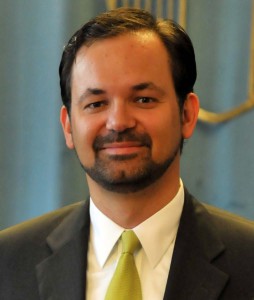Interview: Prof. Michael Fuchsjäger, chair of the ESR Finance & Internal Affairs Committee
For this month’s ESR News interview, we spoke to Prof. Michael Fuchsjäger, from Graz, Austria, who serves on the ESR Executive Council as chair of the ESR Finance & Internal Affairs Committee. He gave us an insight into the workings and recent achievements of his committee, as well as his own background within the ESR.
ESR Office: What is the overall purpose of the ESR FIA Committee and how does it operate?
Prof. Michael Fuchsjäger: The Finance and Internal Affairs Committee is responsible for monitoring the ESR’s investments and preparing the society’s annual budget. It presents regular updates to the Executive Council for discussion and final approval. To set a good example and save both time and resources, most of the committee’s meetings are held as part of the Executive Council meetings rather than on separate occasions. Aside from budgetary questions, the committee is also responsible for membership issues. The ESR reached a record of 60,000 members in June last year, finally peaking at 62,934 individual members from 156 countries. Despite this huge number, which makes the ESR the world’s biggest radiological society, the ESR attaches great importance to maintaining a high professional standard of its member community. The FIA Committee receives reports from the ESR Office’s Membership Department at regular intervals, which is part of the mechanism to ensure that the application criteria for the various membership categories are met. Membership subscription for 2015 is still open until August 27, 2015. Before this deadline, there will be increased promotion especially among those who have not yet seized the opportunity to benefit from the numerous related benefits. I invite all of you to visit the ESR website for more information.
ESR: What are the main issues currently on the committee’s agenda, and how are they being tackled?
MF: The ESR’s budget is constantly monitored with the ultimate goal of achieving the best possible efficiency for the benefit of the society’s members. Each project proposed by any of the ESR’s numerous committees, subcommittees and other entities has an impact on the budget. When evaluating potential new activities in terms of cost efficiency, the ESR focuses on meeting the demands of its membership and the radiological scientific community. The evaluation is of course a constant process and continues for all established activities. The ESR committees and their sub-entities are structured in such a way as to create and permanently monitor synergies, for example by cross-representation of their members. The committee chairs, who attend all meetings of their sub-entities and coordinate their activities, regularly report to the Executive Council. This allows for quick decision making processes, also in terms of potential budgetary implications.
ESR: What new issues or projects do you think the FIA Committee will be dealing with in the coming years?
In order to strengthen our position as the world’s biggest radiological society, the ESR constantly needs to stay close to its members and their concerns. Through the work of its committees and other bodies, the ESR is able to react quickly to developments in the radiological community. The FIA Committee’s role here is to make sure that this can be done with the available resources. Ensuring the best possible coordination of activities again plays a role here. What the committee also needs to monitor closely is the development of the global financial situation and regulations pertaining to the healthcare sector that might have an impact on the ESR’s budget.
ESR: Which other ESR committees or subcommittees have you been a part of and how did you initially become involved?
MF: My involvement started almost a decade ago with postgraduate educational lectures at the ECR and later as a member of the scientific subcommittee for breast imaging (2009-2011) and as topic coordinator for hands-on imaging-guided breast biopsy. From 2012 to 2014 I was a member of the ESR Professional Organisation Committee, which has since been renamed the Quality, Safety and Standards Committee. In March 2014, I was elected Chairperson of the Finance and Internal Affairs Committee. In this function, I also serve as an ex-officio member of the ESR Congress Committee, the Programme Planning Committee and the ESR Publications Committee. In addition, I have been appointed one of the ESR’s representatives on the joint ESR-EORTC (European Organisation for Research and Treatment of Cancer) Working Group, which operates under the ESR Research Committee. I am also a co-opted member of the European Imaging Biomarkers Alliance (EIBALL) Subcommittee, which was established earlier this year under the same committee.
ESR: What motivates you to devote your time to the ESR and how has being involved affected you personally and professionally?
I feel honoured to have been given the opportunity to work with the brightest radiological minds of Europe and perhaps of the whole world, to shape the future of radiology in Europe by being part of the decision making process of such an important global society together with the other members of the Executive Council. It is amazing to see the wealth of topics the ESR is dealing with, not only at a European level, but also on an even broader scale, and to get an insight into the situation of radiology and its related professions in other countries. Aside from this knowledge gain it has been particularly rewarding for me to get to know so many renowned professionals both within the ESR and among its collaboration partners, professionally and personally. To summarize, it is hard work, but also a lot of fun, and I can learn a lot every day.



